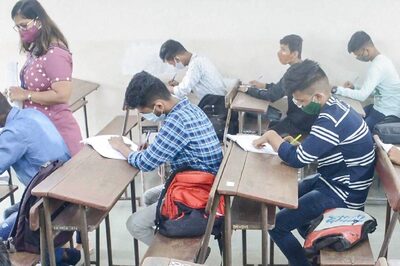
views
THIRUVANANTHAPURAM: They say imitation is the best complement. Imitations and modifications of the Thumburmuzhy Model of composting waste, which uses microbes isolated from cow dung, is catching up like fire all across the state.Already a hit in its place of birth at Thrissur, the method is slowly becoming a hit not just in Northern Kerala, but also in the Capital city which is crippled by a nonfunctional garbage treatment plant at Vilappilsala.Developed by Francis Xavier of Kerala Veterinary and Animal Sciences University, what makes this model of aerobic composting acceptable is the lack of any smell while composting, foul or otherwise.“This method of composting, which emits very little methane and carbon dioxide, has been adopted by a number of apartment complexes in Thrissur. Even resorts that have a large volume of waste is changing over to this model,” said Francis Xavier.The composting unit which is becoming the darling of decentralised waste management includes a box-like structure with ferro-cement floor, layers of cowdung, carbon source and waste materials are subjected to composting in presence of oxygen. The temperature rises rapidly in the waste to almost 70 degree Celsius and this peak temperature kills pathogens. This also means that there is no fly menace or odour.One of the pioneers in setting up a modified version of this plant here has been S Chandrasekharan Nair of Peyad, better known as Kerala Farmer for his innovations in the field of agriculture. What is most interesting about his modified version is the cost-effectiveness.“While the original model is pretty expensive, I have been able to develop this for just Rs 1,800 and it is functioning quite well. I was totally guided by Francis Xavier in developing this. He gave me the technology support,” said Chandrasekharan Nair.Apart from the cost, the other major difference from the original model is the source of microbes. “While they used microbes naturally seen in cow dung, my source of microbes has been the slurry from the bio-gas plant. The sewage is also connected to the biogas plant,” he explained. This has a two-fold advantage that the compost will give a manure with perfectly balanced nitrogen, phosphorous and potassium content while the slurry is high in nitrogen.When the waste is piled up, the temperature rises in the pile and the high temperature is maintained for a week. The decomposed waste settles down and the manure can be taken out within 12-15 weeks. There is no slurry and there is no seepage either.The city-based Green NGO Thanal, that had been looking for cost-effective solutions to waste disposal problems in the city after the Vilappilsala Plant closed down, found the Thumburmuzhy Model very effective. “We thought that this would be a good solution where the volume of waste is large such as flats and villa complexes. This is easily manageable and is totally free of odour. We are in the process of developing similar composting techniques,” said Thanal trustee Jayakumar.In the meanwhile, the Agriculture University has upgraded the functioning of the microbes and might even start marketing the whole composting unit.

















Comments
0 comment